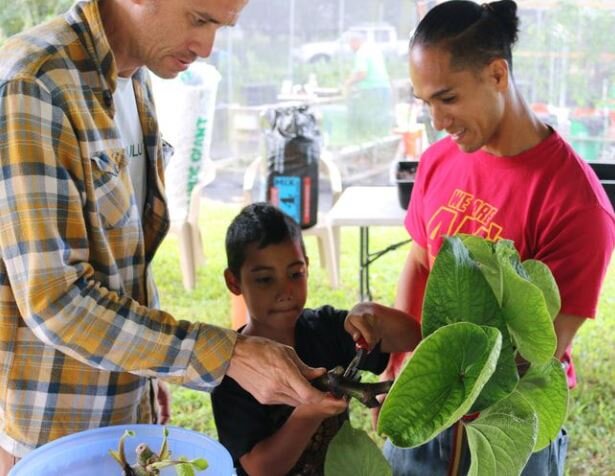Patrick Kahawaiolaa, a Kupuna (Elder) and a lessee of the Department of Hawaiian Home Lands (DHHL) narrated, based on a 1900s congressional record how non-Hawaiian landowners and ranchers testified against the establishment of homestead lands. Then Prince Kūhiō was forced to compromise on geographic distribution of homestead lands and on the blood quantum in order to secure votes in Congress to pass the Hawaiian Homes Commission Act of 1921. As a territorial representative, the Prince did not have voting powers in Congress. The Kupuna related this to the recent challenges that the Keaukaha and Panaʻewa people are facing, and reminded them not to let their guard down and to always be vigilant.
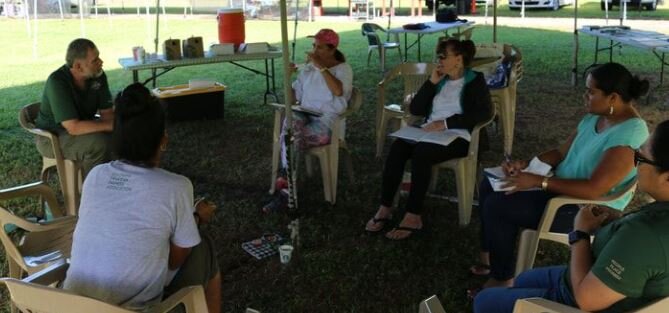
The Keaukaha Panaʻewa Farmers Association (KPFA) caters to the native Hawaiian farmers living on lands delineated by the US Government. They have been seeking ways to obtain their own system of self-governance. The project’s centrepiece was the community’s wellbeing through sustainable farming and application of revitalized traditional, spiritual and ecological knowledge systems. Through project activities, community leadership and partnerships with local practitioners, the academe, and government agencies such as the College of Tropical Agriculture and Human Resources (CTAHR) of the University of Hawaii, and the Department of Hawaiian Home Lands were forged, enhanced, and followed through.
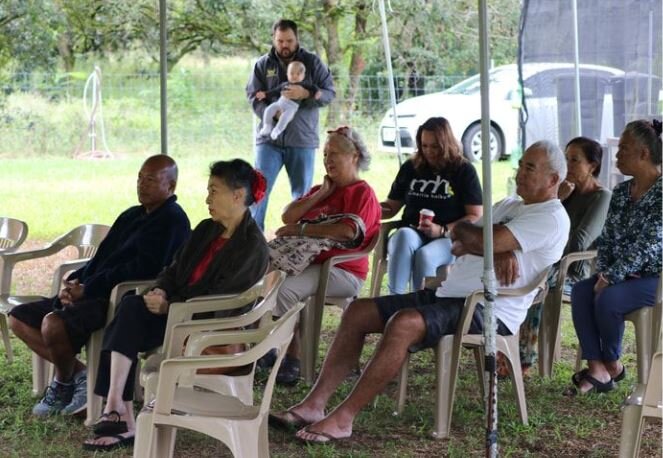
Multifarious fields of knowledge and horticultural practices benefitted the farmers. A storied plant whose roots bear historical, cultural, sacred and health significance to native Hawaiians, the ‘awa (pronounced as “ah-vah») was reintroduced to the farmers. Local expert Ed Johnston maintains an original collection of Hawaiian ‘awa cultivars. Through his early and continuing efforts, planting material is made available, revitalizing ‘awa’s cultural and commercial use. He and his wife Helen popularized the uses, preparation and consumption of the ʻawa plant by sharing the history of experiences and connection to ʻawa through a book they had previously published. He demonstrated how ʻawa is harvested and propagated and participants were made to take home different Hawaiian varieties of ʻawa. This was boosted by another activity on methods of pest control and care of ʻawa. Months later, the farmers harvested different varieties of the ʻawa with their mentor Ed.
Agroforestry was introduced by resource person JB Friday who shared about integrating forest trees and crops and the system’s advantages and applicability by providing examples of existing practices in other Pacific communities. Another aspect was composting which the farmers appreciated upon learning how waste can enrich soil fertility. The practical application based on needs, design of gardens and planting areas was discussed. With sufficient knowledge, participants were confident to create their own compost system at home. Still another aspect was grafting of plants which Kiersten Akahoshi, Jr. from CTAHR shared, then guided the participants by demonstrating the process of grafting. In another activity, the participants learned how to cultivate, propagate, and harvest local plants such as ʻōlena, ti leaf, māmaki, koʻokoʻolau and lemongrass which are all beneficial to health. They were able to take their plants home to start their own Laʻau garden.
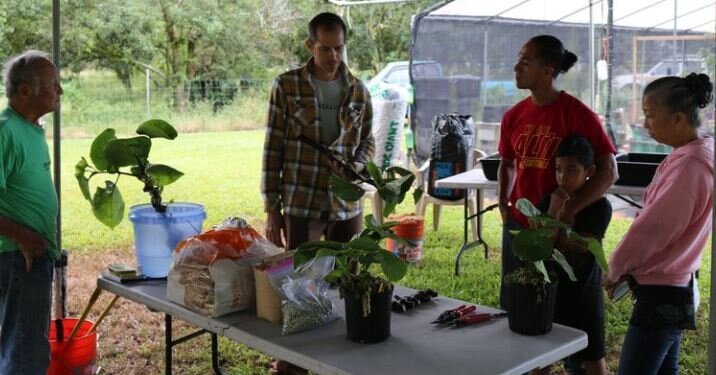
Moon cycles guided planting, fishing, and many aspects of traditional life, as ancestors believed. Kanani Frazier of the Moon Phase Project shared how the moon helps to guide contemporary lifestyles. Participants were taught how to record their observations in the Moon Phase Journal that they took home.
A group of Panaʻewa homesteaders visited the island of Molokaʻi for a Community Impact Research trip. Kalamaula, the first DHHL homestead, was established in 1921 and has a long agricultural history. The group learned different programs and initiatives long established and still being practised. For instance, they learned that once a year, the community gathers to learn about the many varieties of taro, a staple food in Hawaii. Community members participate in harvesting and receiving a half-inch slice of the corn top attached to the leaf-stem to plant in their own garden, plantation, patch, or cultivated field. This encourages families to participate with their children and continue the planting traditions. The group considered incorporating these into their own ways to support and inspire their community.
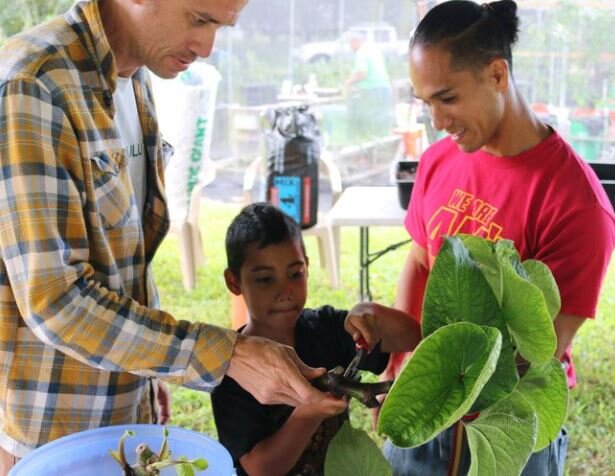
All in all, the project engaged the community through outreach strategies which increased the farmers’ awareness on food security through the propagation and preservation of traditional Hawaiian food and medicinal plants. The younger generation still has to be encouraged to participate in workshops and opportunities that are being provided. As one participant said, “More workshops like this would benefit the generations to come.”
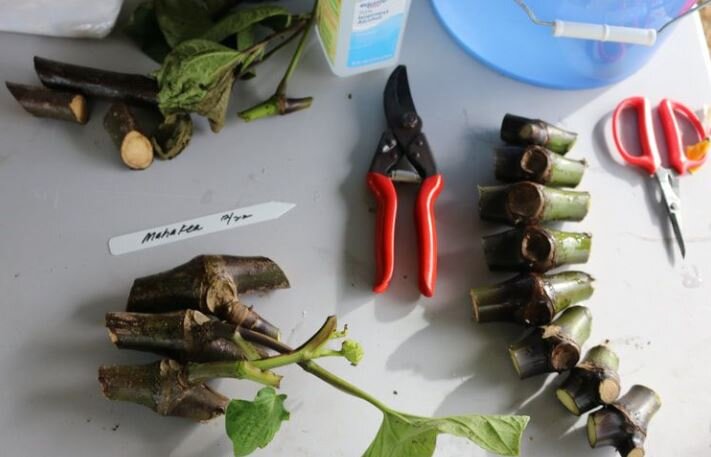
The participants were thankful for the stewardship of their ‘āina ho’opulapula or homesteading lands. The entire project that consisted of workshops, and hands-on activities and exposure trips allowed participants like Huakaʻii Wailuku and Wahi Panao Humuʻulu to be “part of an amazing ho’onui’ike (to increase knowledge) session.” They profusely thanked the KPFA alaka’I (leaders) for “paving another path to learn and move forward with our homestead community.”
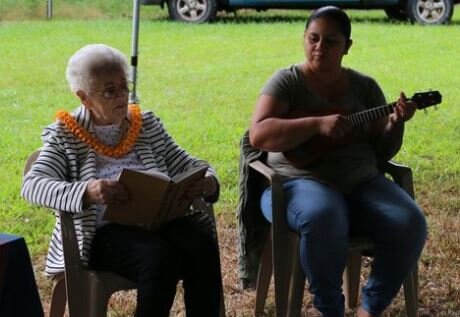
(The Hoʻoulu ʻĀina Community Project was implemented by the Keaukaha Panaʻewa Farmers Association (KPFA) in Hawaii from 2018 to 2019 with support from PAWANKA Fund)

